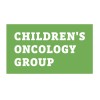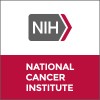
A Study of Safety and Efficacy of Nivolumab and Bendamustine (NB) in Patients With Relapsed/Refractory...
Hodgkin's LymphomaA clinical study of safety and efficacy of treatment with Nivolumab and Bendamustine (NB) in patients with relapsed/refractory Hodgkin's lymphoma.

Combination of Nivolumab and DHAP in Patients With Relapsed or Refractory Classical Hodgkin Lymphoma...
Hodgkin LymphomaA clinical study of safety and efficacy of treatment with Nivolumab and DHAP in patients with relapsed/refractory Hodgkin's lymphoma

Study to Evaluate the Efficacy and Safety of Camidanlumab Tesirine (ADCT-301) in Patients With Relapsed...
Relapsed Hodgkin LymphomaRefractory Hodgkin LymphomaThe purpose of this study is to evaluate the clinical efficacy and safety of Camidanlumab Tesirine (ADCT-301) in participants with relapsed or refractory Hodgkin Lymphoma (HL).

Multicentric and Retrospective Analysis of Adolescent Young Adult (AYA) Hodgkins' Lymphoma Patients...
Hodgkin LymphomaAdolescent Behavior1 moreThe principal aim of this study is to collect retrospectively all Adolescent Young Adult patients affected by Hodgkin's Lymphoma and treated in pediatric or adult haemato-oncology Centers. The data set collection aims to define the therapy performed and the results obtained in terms of overall survival and acute or late complications.

Relevance of a Web-mediated Follow up in Patients Having a Lymphoma With a High Risk of Relapse...
LymphomaT-Cell5 moreLymphoma is the 6th cancer in terms of incidence in France where approximately 11,000 new cases are diagnosed each year. Most types of lymphomas occur at all ages with a predominance in elderly subjects. With the continuous improvement of the diagnostic techniques and the treatments, the prognosis of lymphomas is constantly improving. However, 20-40% of patients relapse most often within 2 or 3 years after the end of treatment. The current standard follow up includes a clinical examination and a biological check-up every 3 months for 2 years, then every 6 months up to 5 years and an imaging every 6 months. However, the interest of this systematic surveillance by imaging is controversial. The use of new information and communication technologies, can improve the clinical follow-up of patients. To date, access to the Internet and portable technologies is sufficiently broad and democratized to envisage the use of this type of remote surveillance in the field of health. In particular to facilitate the dissemination of information between the patient and the physician. It is thus possible to imagine using this flow of information to generate alerts. Strengthening the clinical follow-up in this indication, in which routine imaging has not demonstrated their interest, in particular by the implementation of remote monitoring completed by the patient, may present an advantage in terms of effectiveness and precocity of care. In this pathology, up to 40% of patients relapse early (within 2 to 3 years), in the vast majority of cases symptomatically (less than 2% asymptomatic relapse discovered by imaging). Finally the CT scan every 6-month , which generates radiation costs and exposures for a relatively low benefit, is performed in symptomatic patients since several weeks. The aim of this study is to evaluate the interest of a web-mediated follow up using a score based on the dynamics and the association of clinical and biological signs to alert the physician of a possible recurrence of the patients treated for a lymphoma in complete or partial response.

Combination Chemotherapy and Radiation Therapy in Treating Young Patients With Newly Diagnosed Hodgkin...
Childhood Nodular Lymphocyte Predominant Hodgkin LymphomaStage III Childhood Hodgkin Lymphoma1 moreThis phase III trial is studying how well giving combination chemotherapy together with radiation therapy works in treating young patients with newly diagnosed Hodgkin lymphoma. Drugs used in chemotherapy work in different ways to stop the growth of cancer cells, either by killing the cells or by stopping them from dividing. Radiation therapy uses high energy x-rays to kill cancer cells. Giving combination chemotherapy together with radiation therapy may kill more cancer cells.

Clinical Pharmacology Study of Brentuximab Vedotin (SGN-35)
CarcinomasDisease7 moreThe purpose of this study is to identify brentuximab vedotin drug-drug interactions in patients with CD30-positive cancers and to determine the main route of excretion. The study will also assess blood drug levels in patients with renal or hepatic impairment (special populations).

Phase II Trial of Alemtuzumab (Campath) and Dose-Adjusted EPOCH-Rituximab (DA-EPOCH-R) in Relapsed...
Hodgkin LymphomaDiffuse Large B-Cell LymphomaBackground: Studies conducted at the National Cancer Institute suggest that certain chemotherapy drugs may be more effective if given by continuous infusion into the vein rather than by the standard method of rapid intravenous injection. One combination of six chemotherapy drugs, known as etoposide, prednisone, vincristine, cyclophosphamide, doxorubicin, and rituximab (EPOCH-R), has had a high degree of effectiveness in people with certain kinds of cancer. Recent evidence also indicates that the effects of chemotherapy may be improved by combining the treatment with monoclonal antibodies, which are purified proteins that are specially made to attach to foreign substances such as cancer cells. A monoclonal antibody called campath (alemtuzumab) has been manufactured to attach to a protein called Campath-1 antigen (CD52) that may target tumor cells or the surrounding inflammatory cells. Researchers are interested in developing new treatments for large B-cell lymphoma or Hodgkin lymphoma that can best be treated with chemotherapy. This protocol is specifically for people with diffuse large B-cell or Hodgkin lymphomas that have not responded to standard treatments. Objectives: - To test whether giving campath (alemtuzumab) in combination with continuous infusion EPOCH-R chemotherapy will improve the outcome of lymphoma treatment. Eligibility: - Individuals 18 years of age and older who have large B-cell lymphoma or Hodgkin lymphoma that has not responded well to standard treatments. Design: During the study, patients will receive standard EPOCH-R chemotherapy, which includes the following drugs: etoposide, prednisone, vincristine, cyclophosphamide, doxorubicin, and rituximab. The additional drug, campath, will be given by intravenous (IV) infusion on the first day of treatment over several hours. When the campath IV infusion and rituximab IV infusion are complete, the drugs doxorubicin, etoposide, and vincristine will each be given by continuous IV infusion over the next 4 days (that is, continuously for a total of 96 hours). Cyclophosphamide will be given by IV infusion over several hours on Day 5. Prednisone will be given by mouth twice each day for 5 days. Patients may be given other drugs to treat the side effects of chemotherapy, to prevent possible infections, and to improve white blood cell counts. The campath-EPOCH-R therapy will be repeated every 21 days, as a cycle of therapy, for a total of 6 cycles. Following the fourth and sixth treatment cycles (approximately weeks 12 and 18) of campath-EPOCH-R treatment, study researchers will perform blood tests and computed tomography (CT)/magnetic resonance imaging (MRI) scans on all patients to assess their response to the treatment.

Safety and PK/PD of TG-0054 in Multiple Myeloma, Non-Hodgkin Lymphoma and Hodgkin Disease Patients...
Multiple MyelomaNon-Hodgkin Lymphoma1 moreA phase II study to evaluate the safety, pharmacokinetics, and hematopoietic stem cell mobilization of TG-0054 in patients with multiple myeloma, non-Hodgkin lymphoma or Hodgkin disease.

Tandem Auto-Allo Transplant for Lymphoma
DiffuseLarge B-Cell9 moreRelapse remains a principle cause of treatment failure for patients with aggressive lymphoma after autologous transplantation. Non-myeloablative allogeneic transplantation allows patients to receive an infusion of donor cells in an attempt to induce a graft versus lymphoma effect. This study will assess the feasibility, safety and efficacy of the combination of autologous stem cell transplantation followed by non-myeloablative transplantation for patients with poor-risk aggressive lymphoma.
